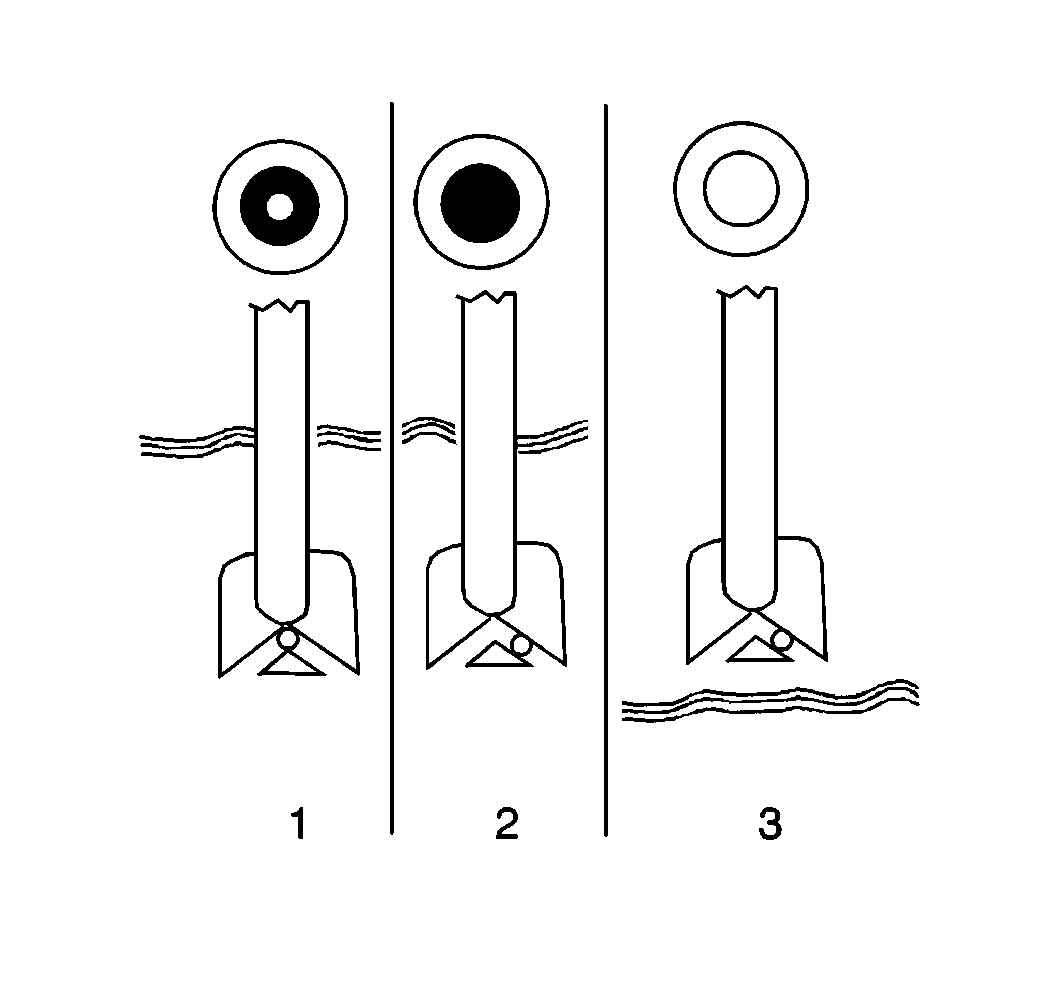
| • | Use a charger, with an
end voltage of 16 V, equipped with a voltmeter that is accurate to
within 1 percent. |
| | The ambient temperature should be 15-38°C (60-100°F).
A battery that is extremely cold will not accept immeasurable current for
several hours after starting the charger. |
| • | The charging area should be well ventilated. |
| • | Do not charge the battery when the built in hydrometer is clear
or yellow (3). Replace the battery if there is a cranking problem. |
| • | Do not charge a battery that appears to be frozen. |
| • | Batteries showing a green dot in the hydrometer (1) do
not need to be charged unless they have just been discharged (such as cranking
the engine). |
Charging Time Required
The time required to charge a battery will vary depending upon the following
factors:
| • | The size of the battery - A completely discharged, large,
heavy-duty battery requires more than twice the recharging time as a
completely discharged, smaller battery. |
| • | The temperature - A longer time is needed to charge any
battery at -18°C (0°F) than at 27°C (80°F). When a fast
charger is connected to a cold battery, the current accepted by the battery
is very low at first. Then, as the battery warms, the battery accepts
a higher rate of current. |
| • | The charging capacity - A charger which can supply only
five amperes requires a much longer charging period than a charger that can
supply 30 amperes or more. |
| • | The state-of-charge - A completely discharged
battery requires more than twice as much charge time as a half charged battery.
Because the electrolyte is nearly pure water and a poor conductor in
a completely discharged battery, the battery accepts very low current
at first. Later, as the charging current causes the electrolyte acid
content to increase, the charging current also increases. |
Charging Procedure
Tools Required
Battery Terminal Adapters
Notice: Turn OFF the ignition when connecting or disconnecting the battery cables,
the battery charger or the jumper cables. Failure to do so may
damage the PCM or other electronic components.
Do not charge a battery with a green hydrometer dot unless
it has just been discharged, such as in cranking.
When charging side-terminal batteries while on-vehicle, use the following
procedure:
- Turn OFF the charger.
- Connect the charger positive lead to the positive cable terminal
located in the engine compartment on the right side.
- Connect the negative charger lead to a solid engine ground, such
as the generator mounting bracket.

Notice: Use the correct fastener in the correct location. Replacement fasteners
must be the correct part number for that application. Fasteners requiring
replacement or fasteners requiring the use of thread locking compound or sealant
are identified in the service procedure. Do not use paints, lubricants, or
corrosion inhibitors on fasteners or fastener joint surfaces unless specified.
These coatings affect fastener torque and joint clamping force and may damage
the fastener. Use the correct tightening sequence and specifications when
installing fasteners in order to avoid damage to parts and systems.
- When charging side-terminal
batteries out of vehicle, install battery side terminal adapters.
Tighten
Tighten the battery side terminal adapters to 15 N·m (11 lb ft).
- Make sure all battery terminals are clean and tight.
Best results occur when charging a battery that is at room temperature.
A battery that is extremely cold may not accept current for several hours.
- Charge the battery until the hydrometer has a green dot.
- Inspect the battery every half hour after starting the battery
charger.
- Tap the hydrometer lightly to dislodge any air bubbles. The bubbles
may cause a false indication.
- After charging, test the battery. Refer to
Battery Not Operating Properly
.


